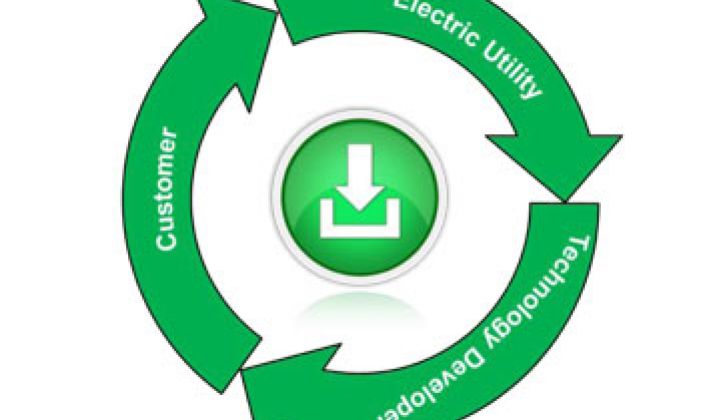The same week that Google officially shut down its PowerMeter offering in fall 2011, Aneesh Chopra, then the first U.S. Chief Technology Officer, challenged the utility industry to launch a Green Button initiative to give consumers access to their smart meter data.
For Google’s PowerMeter, the advent of Green Button was too late. Despite the company’s claims that it was a huge success for those who used it, there were simply not enough people with access to their power data for it to be worth Google’s time and effort.
Fast forward to the 2013 ARPA-E Energy Summit, currently being held just outside of Washington, D.C. At a fireside chat, Michael Jones, Chief Technology Advocate at Google Ventures, repeated that PowerMeter was well received but stymied by utilities and regulators.
“There are intelligent power meters, but there are rules for power companies on how they can share the data,” lamented Jones.
It’s true; the regulatory landscape for utilities is complicated, and woefully outdated in a fast-paced world of big data and information sharing. But since the demise of PowerMeter was first announced, large states like California have outlined rules on how power data can be shared and who owns it. Many of the nation’s largest utilities have supported the Green Button (at least in theory).
The issues are not completely resolved, but the tedious work is being spearheaded by a few innovative states and utilities. The White House has also called for consumers to be able to access their power data nationwide.
But Jones, who wouldn’t acknowledge one failed venture by Google when pressed by the moderator, also did not acknowledge that the environment that was so inhospitable to Google PowerMeter is (slowly) changing. The concept of Green Button was never mentioned, and it appears that Google, for good reason, just simply isn't interested in applications that require cutting through so much regulatory red tape.
When Google shuttered PowerMeter, Greentech Media hypothesized that it could reemerge in a more mature market, when regulators had sorted out privacy issues and more smart meters were deployed and functionalities were turned on. The mature market has not quite arrived, but the success of companies like Opower, which have slogged through the utility world's red tape, have seen success in bringing power information to customers.
Although PowerMeter was before its time, Jones was already speculating about the future of a smart home and open energy markets, without making any claims of Google working in the space. “The power meter could tell your house that prices are about to go up and your refrigerator might turn the compressor on now, then coast once prices go up.”
Call me in twenty years, Jones. The concept is a great one, but the market mechanisms and regulatory changes that would need to happen, not to mention customer acceptance, would constitute a leap of gigantic proportions. Jones is essentially referring to transactive energy control, a system where the grid can relay its needs down to individual nodes -- such as a refrigerator or HVAC -- are being explored in early demonstration projects, such as the DOE’s Pacific Northwest Demonstration Project. It’s hardly the way business is done today down at the residential level. As for smart appliances, standards are coming, but no one is purchasing a refrigerator based on whether it can talk to the utility.
The fireside chat, which also included Bill Ruh, a VP at General Electric Global, highlighted the chasm between the consumer internet and the emerging industrial internet, which Ruh is working on. “When we look at the amount of data coming off of machines, it dwarfs even the consumer internet in terms of big data,” said Ruh.
The question, however, is whether regulation can adapt fast enough to allow the internet of things to permeate through the power sector and down to end-users. For Google’s PowerMeter, changes could not come fast enough for it to stay in the game. It’s not clear at this point whether there will be enough change for Google ever to throw its hat back into the ring of consumer power data.



